Why Bird of Paradise Plant Leaves Curling & How to Fix It?
Written by LisaSmith
Jan 06 2023
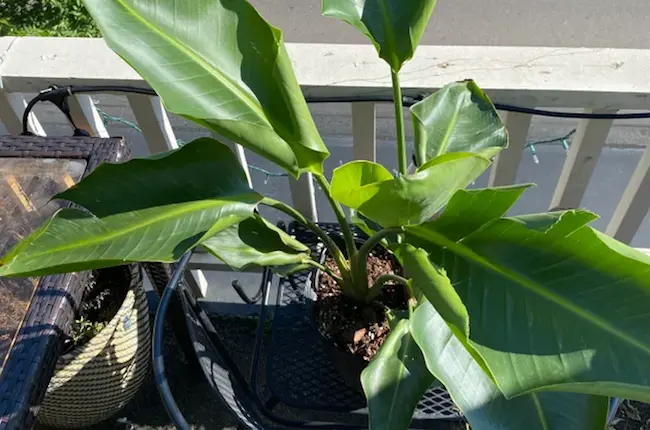
Inadequate watering, too dry air, drastic temperature changes, or excessive pH stages of the soil are the main reasons of Bird of paradise leaves curling. Learn why your Bird of Paradise plant leaves curling and take quick actions to save your plant.
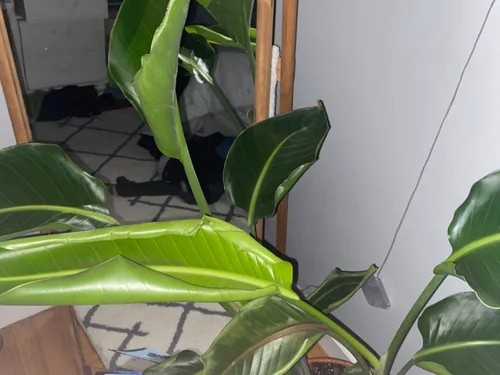
Bird of Paradise Plant Leaves Curling Inward
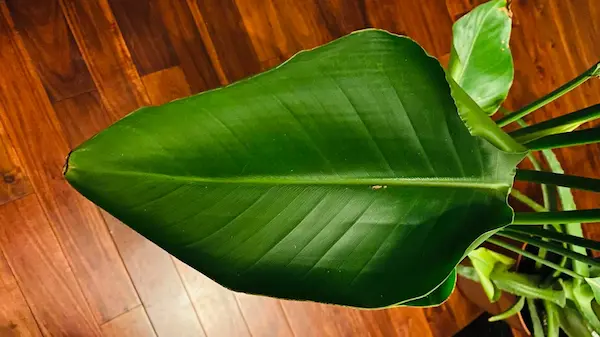
Bird of Paradise Plant Leaves Curling Outward
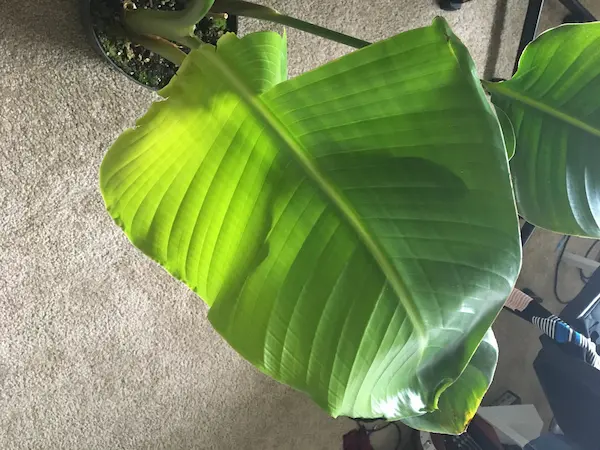
Bird of Paradise Plant Leaves Curling and Turning Yellow
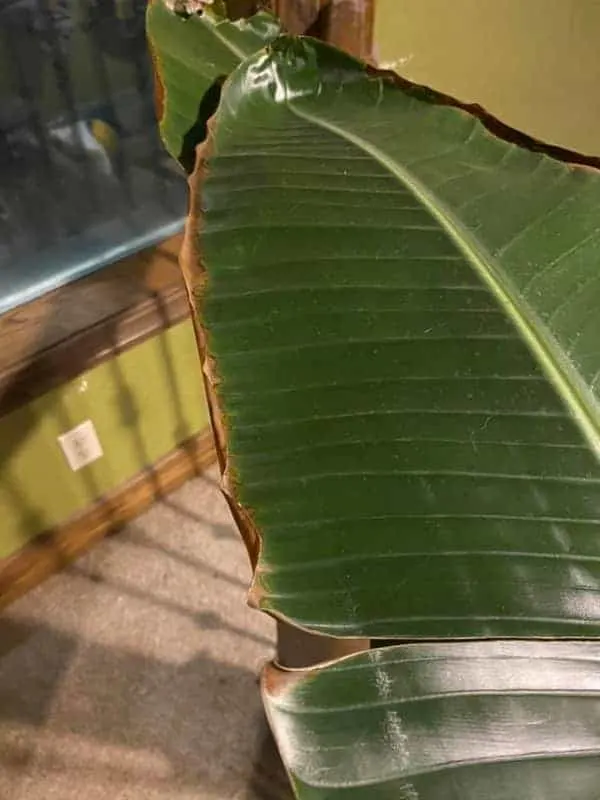
Bird of Paradise Plant Leaves Curling and Turning Brown
If the temperature is too high, your plant’s normal physiological function will cease to work usually. This means nutrients and water won’t reach the leaves, and they will also curl.
Learn the temperature requirements of Bird of Paradise Plant to take of your plant better.
To help the plant survive temperature changes, move it to a warmer location and shade it from the scorching afternoon sun. Watering can also be increased slightly.
Read More:
Learn the water requirements of Bird of Paradise Plant to take of your plant better.
Water thoroughly when the top couple inches of soil are dry. Check the plant frequently until you have determined the appropriate watering schedule for your plant and environment.
Maintain high humidity by running a humidifier, misting the leaves two times per week, or setting up a pebble tray under the plant.
Learn the humidity requirements of Bird of Paradise Plant to take of your plant better.
Also, it may be a means to reduce the area exposed to light and consequently heat. When plants absorb light, they convert excess to heat.
Learn the light requirements of bird of paradise plant to take care of your plant better.
Also, a slight increase in the amount of water during watering can make it easier for the plant to recover.
When root rot sets in, your plant won’t be able to absorb water and other nutrients. So, it will end up with curled leaves because it doesn’t get enough moisture.
If any parts of the plant are salvageable after root rot is discovered, they can be disinfected with diluted hydrogen peroxide and replanted into new soil and a new pot.
Even if the leaves curl after repotting, the plant should rebound within a couple of weeks.
Also, many plant food will encourage quick root growth, making your plant pot bound or affecting the usual microorganism balance (may alter normal absorption).
Only fertilize your Bird of Paradise during the warm months of the year. It does not grow at all during winter, and any fertilizer in the soil will simply stay there until it starts doing damage.
If that is why leaves on your bird of paradise curling, give it a little time. It will adjust and start growing as usual. But ensure you maintain the right conditions.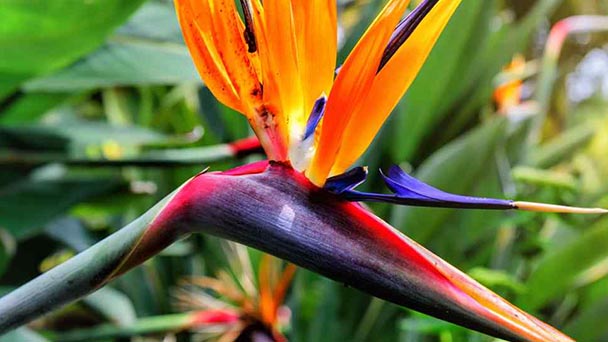 Your Bird of Paradise plant will be simple to care for once you understand the basics. Those curling leaves are simply a cry for assistance in the only language your plant understands. The sooner you notice it, the easier it is to fix.
Your Bird of Paradise plant will be simple to care for once you understand the basics. Those curling leaves are simply a cry for assistance in the only language your plant understands. The sooner you notice it, the easier it is to fix.
Keep your Bird of Paradise hydrated, fed, and in a bright, warm location. Keep an eye out for pests and don’t overwater.
Signs of Bird Of Paradise Leaves CurlingLeaves Curling InwardLeaves Curling OutwardLeaves Curling and Turning YellowLeaves Curling and BrowningReasons & Solutions to Fix Bird of Paradise Plant Leaves CurlingTemperature StressInadequate WateringLow HumidityToo Much LightOverwatering & Root RotRootboundPestsToo Many FertilizersUsual Reasons for Bird of Paradise Curling LeavesNew Unfurling LeavesAgingRepotting, Transplant or Moving ShockHow to Prevent Bird of Paradise Leaves Curling
Signs of Bird Of Paradise Leaves Curling
Leaves Curling Inward
If the bird of paradise leaf curl in lengthways, this is the most common sign of under-watering and it is easy to fix.
Bird of Paradise Plant Leaves Curling Inward
Leaves Curling Outward
A bird of paradise leaf curling outwards, almost inside out, is a sign of a plant suffering from the cold. It may also be a problem with poor soil fertility or pest infestation.
Bird of Paradise Plant Leaves Curling Outward
Leaves Curling and Turning Yellow
A bird of paradise leaf that is yellowing unevenly and curling in from its tip is most likely suffering from nutrient deficiencies or disease. It may also be over-watered, afflicted with rotting roots.
Bird of Paradise Plant Leaves Curling and Turning Yellow
Leaves Curling and Browning
Brown curled leaves are very thirsty leaves indeed! It’s likely you’ve forgotten to water for an extended period or left your poor bird of paradise plant in the sun too long.
Bird of Paradise Plant Leaves Curling and Turning Brown
Reasons & Solutions to Fix Bird of Paradise Plant Leaves Curling
Temperature Stress
If your home is sweltering or your plants are near heat sources, the bird of paradise plant leaves may start curling upwards or inward. Why? Too much heat will mean faster water loss, and plants will respond by curling leaves to reduce the loss.If the temperature is too high, your plant’s normal physiological function will cease to work usually. This means nutrients and water won’t reach the leaves, and they will also curl.
Learn the temperature requirements of Bird of Paradise Plant to take of your plant better.
Signs of Too Much Heat
Signs of too much heat will resemble those of low humidity or a thirsty plant. Besides leaf cupping and rolling, you will see brown tips and margin edges, leaf or flower drop, and wilting. If ignored, your bird of paradise plant may die.Solution
Maintain moderate to warm temperatures year round. In addition, do not plant the bird of paradise in a location that is too close to a heat source or an air conditioning vent.To help the plant survive temperature changes, move it to a warmer location and shade it from the scorching afternoon sun. Watering can also be increased slightly.
Read More:
- How to Care for Bird of Paradise Plant Leaves Curling & Drooping
- How to Take Care of Bird of Paradise Plant Leaves Blackening & Yellowing
Inadequate Watering
Underwatering is the most common reason for the bird of paradise plant leaves curling inward or upward. When thirsty, the plant will curl leaves. This is to reduce their surface area to minimize water loss by transpiration.Learn the water requirements of Bird of Paradise Plant to take of your plant better.
Signs of Inadequate Watering
Besides birds of paradise curled leaves, the soil will be dry, and the leaves will have crispy, brown tips and edges or margins. Also, the plant may wither or wilt – the leaves will droop. Other signs are leaf yellow and stunted growth. If you don’t rectify the issue, leaves may drop, and your plant will eventually die.Solution
Maintain a regular watering schedule for your bird of paradise.Water thoroughly when the top couple inches of soil are dry. Check the plant frequently until you have determined the appropriate watering schedule for your plant and environment.
Maintain high humidity by running a humidifier, misting the leaves two times per week, or setting up a pebble tray under the plant.
Low Humidity
The second most likely reason for the bird of paradise leaves curling is low humidity. These subtropical plants thrive in warm places with high humidity. When humidity drops too much, the potting mix and leaves will quickly lose water and start curling. They are doing so to reduce further loss.Learn the humidity requirements of Bird of Paradise Plant to take of your plant better.
Signs of Low humidity
Signs are similar to those of an underwatered bird of paradise. They include yellow leaves, browning of edges and tips, stunted growth, and dry and crispy feeling leaves. Also, expect the curling upward, and the leaves may droop or curl downward. If you don’t correct the problem, it will wilt and eventually die.Solution
To prevent further curl, raise the humidity around your Bird of Paradise. Here are some ways to raise humidity:- Buy a humidifier. A humidifier is the best way to control humidity.
- Make a pebble tray
- Mist your plant once or twice a week. Be careful not to leave its leaves dripping wet, as this can cause fungal infections.
- Group plants together – it will help create a microclimate with high humidity
- Move your Strelitzia to rooms with higher humidity, like your bathroom or kitchen.
- Adjust the watering to cater for the much loss by transpiration and evaporation from the potting mix.
Too Much Light
Birds of paradise plant can withstand full sun, bright, indirect light, or even medium light. However, too much direct sunlight is a possible sign of leaves curling inward. The hot sun will cause a lot of water evaporation, and the leaves will curl to reduce the loss.Also, it may be a means to reduce the area exposed to light and consequently heat. When plants absorb light, they convert excess to heat.
Learn the light requirements of bird of paradise plant to take care of your plant better.
Signs of Too Much Light
Leaves will look pale, washed out, or yellowish except on the prominent veins. Also, the leaf margin and tips will become crispy, brittle, and turn brown. Other signs are leaves dropping.Solution
To eliminate this problem, you have to find the right place for your plant. The best is to place it against an east or west window and gradually increase the amount of sun it receives. This way you will know exactly how much sunlight your Bird of Paradise can handle.Also, a slight increase in the amount of water during watering can make it easier for the plant to recover.
Overwatering & Root Rot
Overwatering will not cause a direct cause for the bird of paradise leaves curling. But a constantly soggy or wet soil will increase the chance of root rot. Your plant won’t absorb oxygen, and the roots will be weaker. Also, these conditions favor some fungi or bacteria, which will multiply and attack the roots.When root rot sets in, your plant won’t be able to absorb water and other nutrients. So, it will end up with curled leaves because it doesn’t get enough moisture.
Signs of Overwatering or Root Rot
The first sign is the yellowing of leaves and a wet or molded potting mix. Also, bird of paradise plant leaves may curl, have brownish splotches, and your plant will look limp. As it gets serious, expect signs like an excessive leaf dropping, a mushy stem base, stunted growth, wilting, and death.Solution
You can save an over-watered plant by allowing it to completely dry out before watering again if the roots are not showing signs of decay.If any parts of the plant are salvageable after root rot is discovered, they can be disinfected with diluted hydrogen peroxide and replanted into new soil and a new pot.
Rootbound
If you don’t often repot your plant, they get pot or rootbound characterized by tangled, curled, and dense root mass with growth room. This will choke the plant, meaning it will not get enough nutrients or water, and the leaves will start curling.Signs of RootBound
Apart from the bird of paradise curled leaves, expect to see some roots growing from the drainage holes. Other signs are yellowing and dropping leaves, especially those closer to the bottom, and stunted growth. Also, if blooming time, it may not flower, and leaves will be smaller.Solution
Repot your bird of paradise if there are any signs of the plant being rootbound – roots coming out of the drainage holes or growing out of the top of the soil.- Read More: How to Repot Bird of Paradise Plant
Even if the leaves curl after repotting, the plant should rebound within a couple of weeks.
Pests
A heavy infestation of the sap-sucking pests like scale, mites, and trips like Chaetanaphothrips signipennis is a cause for Crane flower, or white bird of paradise leaves curling. This happens because they will suck the juices depriving the leaves of moisture. Some have toxins that deform and make leaves curl.Signs of Pests
The sign will depend on the exact bug your Strelitzia plant has. These telltale signs include holes, spots (brown, yellowish, or black), webbing, honeydew, and sooty mold. More signs are distorted and curly leaves.Solution
Check your plant regularly for any sign of pests. Treat the plant with an insecticidal soap or neem oil at the first sign of any pests. You can also treat the plant once every or every other month as a preventative.Too Many Fertilizers
Fertilizers will promote health and lush leaves. However, too much, especially those rich in nitrogen, may make your bird of paradise leaves curl downwards. The leaves will also be too dark and dull.Also, many plant food will encourage quick root growth, making your plant pot bound or affecting the usual microorganism balance (may alter normal absorption).
- Learn the fertilizer requirements of bird of paradise plant to take care of your plant better.
Signs of Overfeeding
Signs include crusts of fertilizer appearing on the soil, yellow leaves, stunted growth, and leaves dropping. If you apply too much fertilizer, expect some wilting, very dark leaves. Also, the leaf tips and edges may turn brown.Solution
First, remove any visible fertilizer and flush your pot the same way as to treat hard water damage, mentioned above. This will remove the excess fertilizer.Only fertilize your Bird of Paradise during the warm months of the year. It does not grow at all during winter, and any fertilizer in the soil will simply stay there until it starts doing damage.
Usual Reasons for Bird of Paradise Curling Leaves
Not all cases for the bird of paradise curling leaves should worry you. Here are some usual issues:New Unfurling Leaves
When they emerge, new Strelitzia leaves will remain curled as they grow longer. Afterward, they will start unfurling. This process can take some time. It is normal. Just ensure it happens to the new, light-green leaves only.Aging
Older aging leaves may be yellowish then brownish. Also, some parts may curl. If the upper leaves are healthy, prune the yellow and dying leaves. These leaves depend on the plant, yet they no longer contribute. At this time, it’s time to propagate a new plant or buy one. Read more for how to propagate Bird of Paradise.Repotting, Transplant or Moving Shock
If you recently repotted, transplanted, or moved your plant, it may suffer from a bit of shock. This will cause the leaves to curl.If that is why leaves on your bird of paradise curling, give it a little time. It will adjust and start growing as usual. But ensure you maintain the right conditions.
- Re-potting shock is temporary. It should bounce back in a few days and uncurl its leaves.
- Because they grow so tightly in the wild, your Bird prefers to be slightly root-bound. Once every two years is about right.
- Re-pot in the early spring. Partially dormant plants suffer less shock.
How to Prevent Bird of Paradise Leaves Curling

Keep your Bird of Paradise hydrated, fed, and in a bright, warm location. Keep an eye out for pests and don’t overwater.
- For more care tips, please read How to care for Strelitzia Bird of Paradise Plant
Latest Updated
- Benefits of Bugleweed - 7 Science-backed Health Benefits
- Bugleweed Dangers & Side Effects - Is It Poisonous?
- How to Plant Evergreen Trees - What You Should Know
- When to Plant Evergreens - Grow Guide for Evergreen Trees
- 12 Wonderful Evergreen Shrubs for Your Garden
- 12 Popular Evergreen Plants with Pictures for Beginners
- When And How To Prune A Lilac Bush Like a Pro
- How to Grow & Care for Lilac Vine (Hardenbergia Violacea)
- Japanese Lilac Tree (Syringa Reticulata) Care & Propagation Guide
- Shumard Oak Pros and Cons - What to Know
Popular Articles
- Winter maintenance of Antirrhinum Majus
- How to Grow Terminalia Mantaly Tree
- How to Grow and Care for Crossostephium Chinense
- How to grow Antirrhinum Majus in spring
- Peristeria Elata (Dove Orchid) Profile: Info & Care Guide
- Underwatered Snake Plant (Sansevieria Trifasciata) - Signs And How To Fix
- How to Care for Brazilian Jasmine Plant (Mandevilla Sanderi)
- How to Grow & Care for Graptopetalum Purple Delight in Summer
- Rosa Chinensis (China Rose): Plant Growing & Care Tips
- How to Care for Baby Sun Rose (Aptenia Cordifolia)